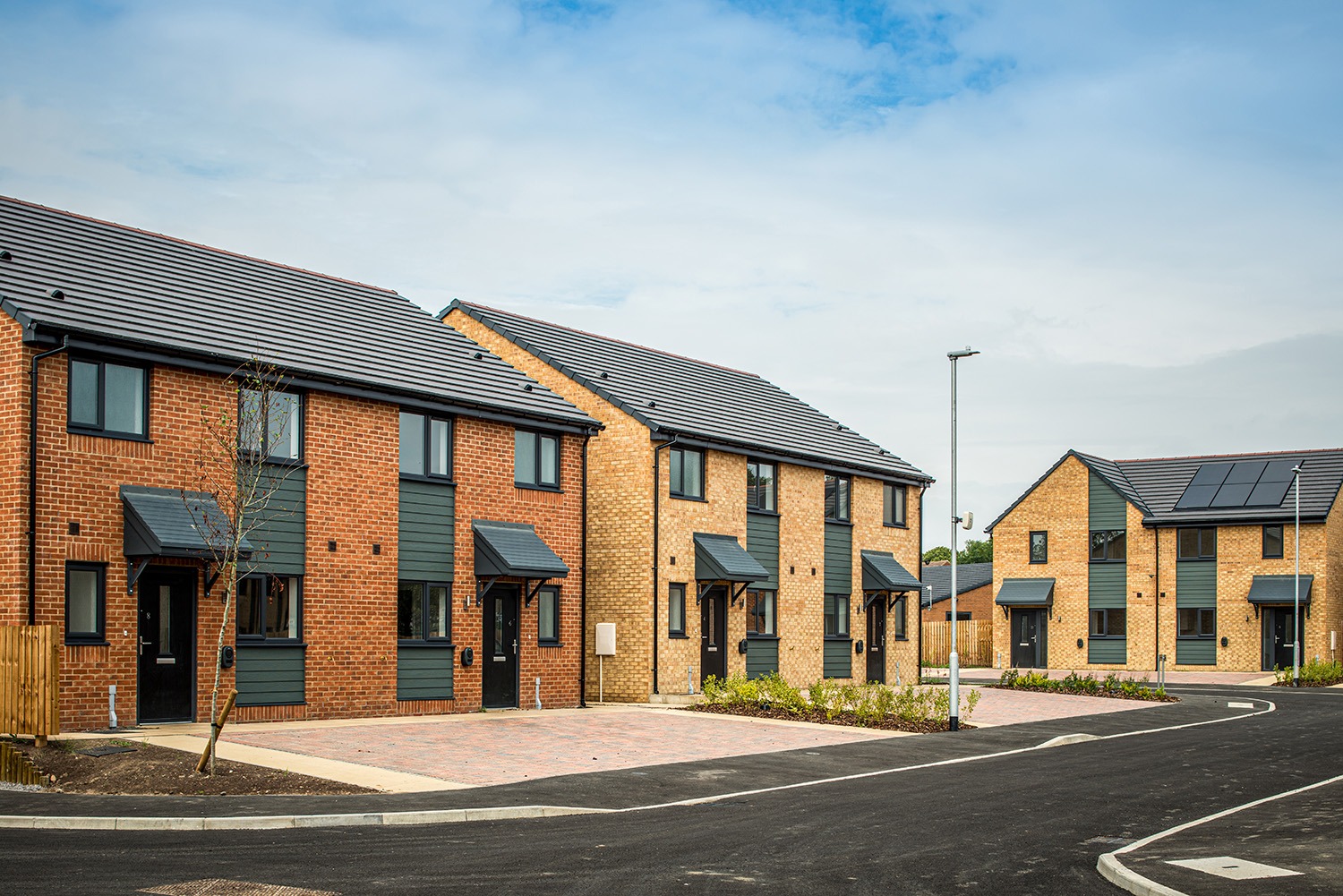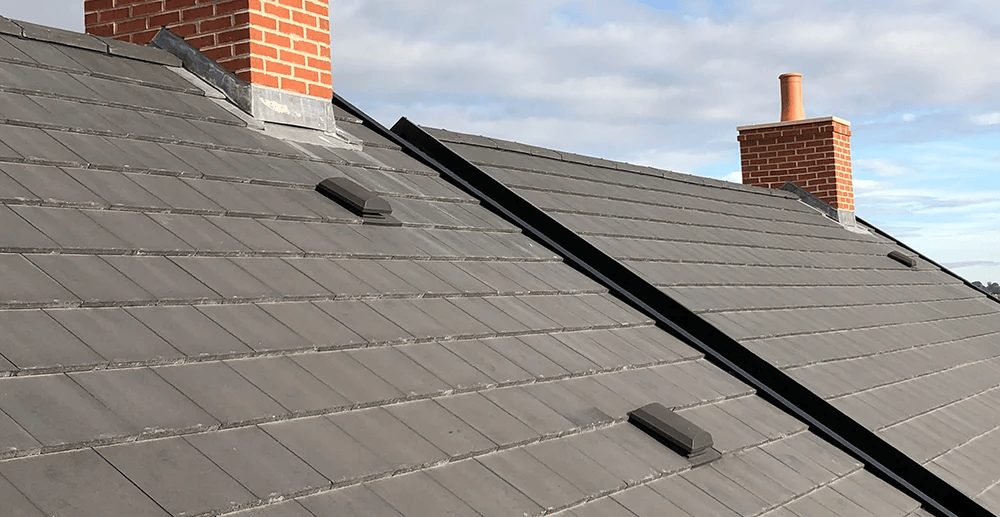From salty sea air to strong winds, heavy rain and humidity, coastal environments bring a variety of challenges to housebuilders. Overcoming these challenges requires a combination of careful design, the right material choices and high-quality installation.
One important consideration, and one that might be easy to overlook because of its small size, is the choice of pitched roof fixings. The clips, nails, screws and brackets used in roofing need to be able to withstand harsh coastal environments. Specifying suitable steel roof fixings can help ensure roof battens, roof tiles, solar panels and dry-fix roofing systems remain secure for the long term, even in corrosive conditions and high-wind locations.
Choosing the right pitched roof fixings is essential for both performance and compliance, and while guidance on the subject of roof fixings for coastal environments is not extensive, the recommendations that do exist – such as the NHBC Standards 2025 for pitched roofs – can inform decision-making and support the construction of high-quality homes that maintain performance over time.
Coastal environments and the challenge of corrosion
A home on the coast overlooking the sea or just a short walk from a beautiful beach – it’s a dream come true for many homeowners. But the coastal location also means a higher chance of corrosion on metallic elements such as screws, nails and other pitched roof fixings.
Stuart Nicholson, Director of Roof Systems at Marley explains that corrosion happens because sea spray and sea air contain molecules of sodium chloride, also known as salt. “Saltwater acts as an electrolyte, meaning that when it’s exposed to a metal surface – such as a roof fixing – it accelerates electrochemical reactions between the metal and the oxygen in the air,” he says.
This process causes oxidation, otherwise known as rust. “Over time, this process eats away at the metal, leading to potential weaknesses in the roof fixings and the overall structure,” he adds.
What can be done to prevent the corrosion of pitched roof fixings in coastal areas?
Oxidation and corrosion from saltwater can affect a variety of materials, such as iron and untreated steel. However, other metals are more resistant to this threat, either because they have natural properties that inhibit oxidation or because they are treated to reduce their reactivity.
- Galvanised steel – Galvanised steel is coated with a layer of zinc, which protects the steel from rust and corrosion.
- Stainless steel – Also known as corrosion-resistant steel, stainless steel is an iron-based alloy that contains chromium, which makes it resistant to rust and corrosion.
- Aluminium – Aluminium naturally forms a thin oxide layer on its surface. This layer acts as a barrier, protecting the underlying aluminium from corrosion.
- Brass and copper – These metals are naturally resistant to oxidation in salty conditions. However, they can react when exposed to other metals, which can limit their use in construction projects.
Why choose steel fixings for housebuilding?
Steel roof fixings are a popular choice for housebuilding projects. However, standard mild steel is likely to corrode in coastal environments, which is why galvanised or stainless steel fixings can be a better choice. They provide better corrosion resistance in salty environments.
Stuart notes that corrosion is only one consideration when choosing pitched roof fixings for coastal locations. “Areas near the seaside also face extreme weather conditions, including high winds, so strength is another critical factor,” he says.
While other metals, such as aluminium, copper and brass mentioned above, may be naturally resistant to the corrosive effects of saltwater, they also do not offer the same strength as steel fixings. “This is particularly important for pitched roofs because of the risk of wind-uplift damage,” Stuart adds.
Additionally, brass and copper are more expensive than steel fixings, making them less viable for most housebuilding projects.
Thanks to their corrosion resistance, strength and cost-effectiveness, galvanised or stainless steel fixings are usually the best choice for pitched roofing in coastal areas. However, always check the manufacturer’s technical information and the recommendations from roofing product manufacturers to ensure compatibility.
NHBC Standards: guidance for pitched roof fixings in coastal areas
The NHBC (National House Building Council) is the UK’s leading provider of warranty and insurance for new homes. Its technical standards, known as the NHBC Standards 2025, set out the requirements and best practices for building safe, high-quality homes, helping to ensure that buildings meet performance and safety expectations. They also provide assurance to homeowners and support for builders.
In the NHBC Standards, the guidelines for pitched roof fixings include the following which are most applicable to this post’s subject.
Fixings for battens and counter battens
NHBC 7.2.17 provides recommendations for fixing roof battens and counter battens. It states that batten fixings should be able to resist wind forces in accordance with BS 5534 (Annex H.7 Batten fixing penetration), and states that the length, type and material specification of the fixings will depend on the site exposure and location. It notes nails for fixing battens and counter battens should meet these minimum requirements:
- a driven nail at least 3.35mm in diameter that penetrates at least 40mm into the supporting structure
- a mechanical gun nail with a shank diameter of at least 3.1mm
- zinc-coated in accordance with BS EN 10230‑1
It also states that for properties in coastal locations, the fixings should be hot dip galvanised steel or aluminium.
Fixings for roof coverings
NHBC 7.2.19 states that when fixing roof coverings such as clay roof tiles, concrete roof tiles, shingles and shakes, ridge tiles, verges and valleys, fixings requirements should be provided by the product manufacturer and be in accordance with BS 5534 and BS EN 1994-1-4.
This section of the NHBC Standards provides extensive guidance for fixings, from how many to use to how deep they should penetrate. It notes that galvanised steel nails should not be used for slates and tiles. Although it does not provide specific advice for coastal environments, it states that tile clips should be made of aluminium alloy or other alloy types, stainless steel, non-ferrous metals, or polymer-based materials, and be of adequate durability and strength in accordance with BS 5534.
It also states that ridge and hip tiles should be mechanically fixed with self-sealing non-ferrous fixings into timber battens.
Fixings for solar PV panels on pitched roofs
NHBC 7.2.26.4 covers the durability of solar panel installations. It states that solar panels and their associated fixings, flashings and trims should be adequately durable and suitable for their location, adding that in coastal locations, grade 316 stainless steel fixings and brackets are recommended.
Building roofs in coastal locations with Marley
At Marley, we understand the challenges associated with building roofs in coastal locations. Our complete roofing system makes it simple to specify a complete roof – from battens to roof tiles and solar panels, as well as the necessary steel fixings in coastal areas. Our system approach also helps reduce the risk of leaks and damage caused by weakened fixings, ensuring all products work together seamlessly.
Where appropriate, we can provide high-quality steel fixings for coastal areas, supporting compliance with NHBC standards.
To enquire about how our fixings can be part of your next roofing project, get in touch.


